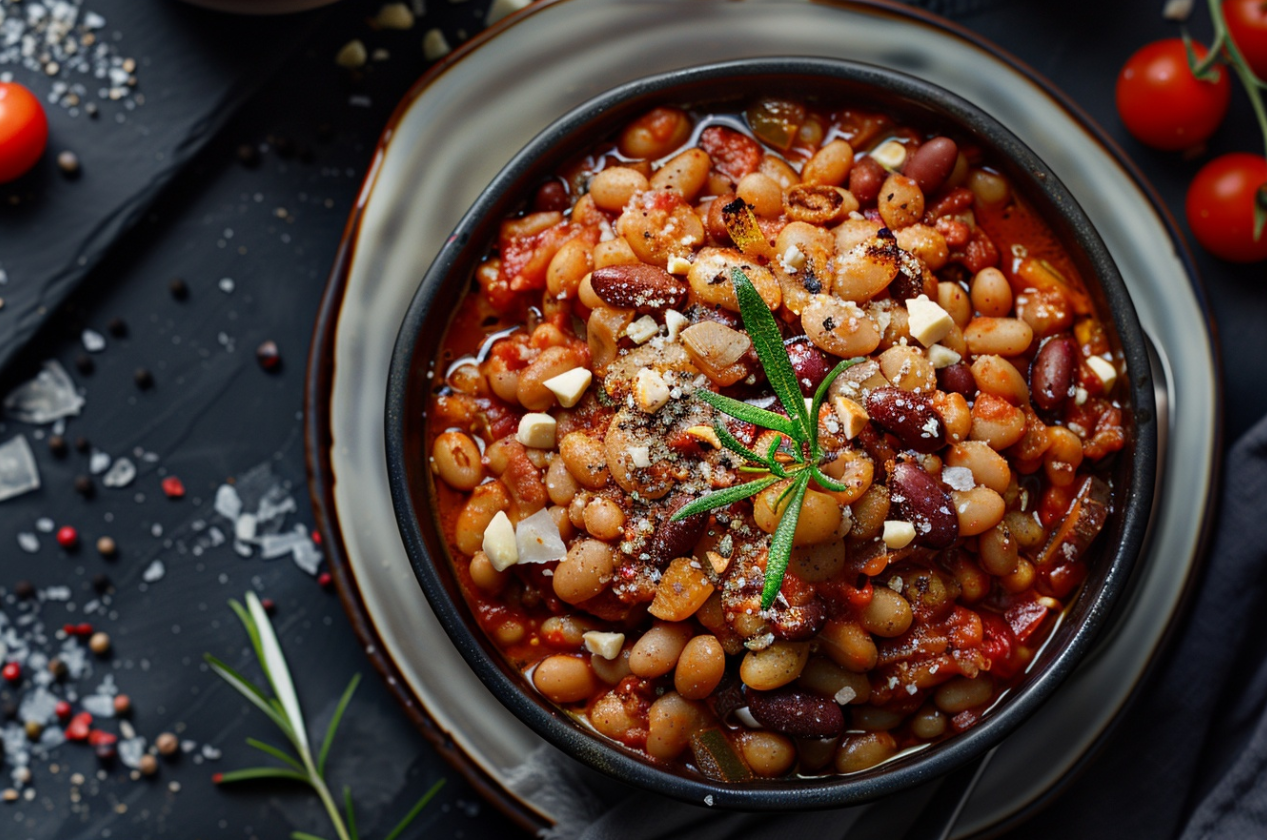Introduction
Overview of Baked Beans Recipe
Baked beans recipe are a staple in various cuisines around the globe, cherished for their versatility and comforting taste. Originating from Native American cooking, this dish has evolved and been adopted widely, featuring prominently in American and British meals.
Purpose of Enhancing Baked Beans
This article delves into the numerous possibilities for enriching the flavor of traditional baked beans. By infusing inventive ingredients and innovative methods, our aspiration is to metamorphose this humble dish into a gustatory masterpiece.
Structure of the Article
The following sections will guide you through everything from basic recipes to advanced cooking methods. We will explore dietary adaptations, answer frequently asked questions, and offer tips to maintain the quality of your dish. Delve deeper into the historical narrative surrounding baked beans to gain a richer comprehension of their cultural significance.
In this comprehensive guide, we’ll ensure your baked beans are not only a side dish but a standout component of any meal. Whether you’re an amateur in the kitchen or a culinary virtuoso, discover invaluable insights to enrich your cooking repertoire. Embark on a gastronomic voyage to elevate your baked beans to unprecedented levels of flavor and gratification.
Basic Baked Beans Recipe
Print
Classic Homemade Baked Beans
- Total Time: 2 hours 45 minutes
- Yield: 6 servings 1x
- Diet: Vegetarian
Description
A detailed introduction to the classic baked beans recipe, perfect for family gatherings or a hearty meal.
Ingredients
- 1 cup navy beans, soaked overnight and drained
- 4 cups water
- ¼ cup ketchup
- ¼ cup maple syrup
- 2 tablespoons brown sugar
- 2 tablespoons molasses
- 1 teaspoon Worcestershire sauce
- ½ teaspoon salt
- ⅛ teaspoon ground black pepper
- ⅛ teaspoon chili powder
- 1 small onion, chopped
Instructions
- Preheat the oven to 325°F (165°C).
- In a large pot, combine the soaked navy beans and water. Bring to a boil, then reduce heat and simmer until beans are tender, about 1 hour.
- In a separate bowl, mix ketchup, maple syrup, brown sugar, molasses, Worcestershire sauce, salt, pepper, and chili powder.
- Drain the cooked beans and place them in a baking dish. Add the chopped onion and the sauce mixture, stirring well to combine.
- Cover the dish with aluminum foil and bake for 2 hours. Remove the foil and bake for an additional 30 minutes until the beans are thick and bubbly.
Notes
Adjust sweetness and spice levels to taste. For a smokier flavor, consider adding smoked paprika or bacon.
- Prep Time: 15 minutes
- Cook Time: 2 hours 30 minutes
- Category: Side Dish
- Method: Baking
- Cuisine: American
Nutrition
- Serving Size: 1 cup
- Calories: 150
- Sugar: 15g
- Sodium: 400mg
- Fat: 1g
- Saturated Fat: 0g
- Unsaturated Fat: 0g
- Trans Fat: 0g
- Carbohydrates: 35g
- Fiber: 6g
- Protein: 6g
- Cholesterol: 0mg
Keywords: Baked Beans
By following these steps, you can create a delicious pot of classic baked beans that is sure to impress. Enjoy!
STEPS
Step 1
Gather the ingredients.

Step 2
In a large saucepan, combine the beans with 4 cups of water. Bring to a vigorous boil over high heat, then lower the heat to medium-low, cover, and let it simmer for 1 hour.
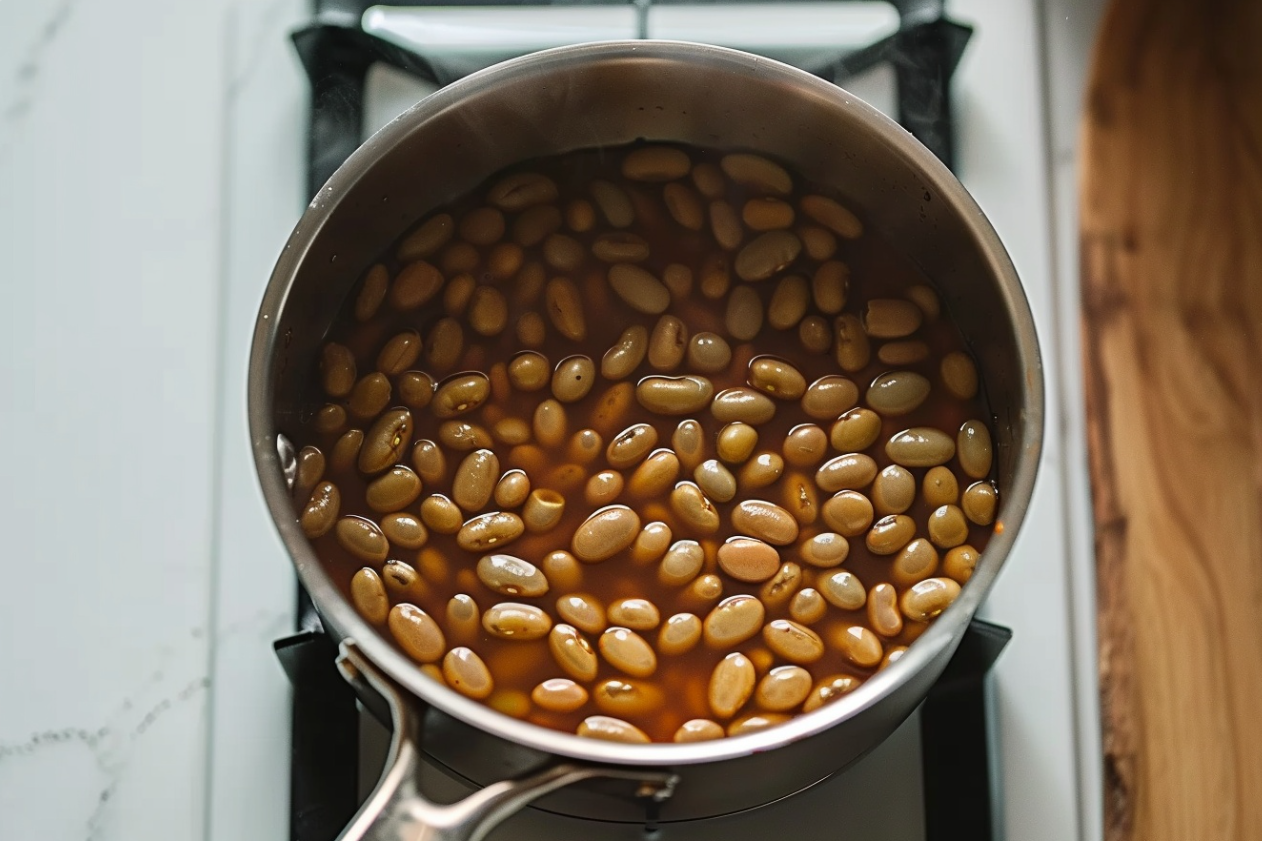
Step 3
Set the oven to preheat at 375 degrees F (190 degrees C). In a small bowl, mix together the ketchup, maple syrup, brown sugar, molasses, Worcestershire sauce, salt, pepper, and chili powder; set aside.
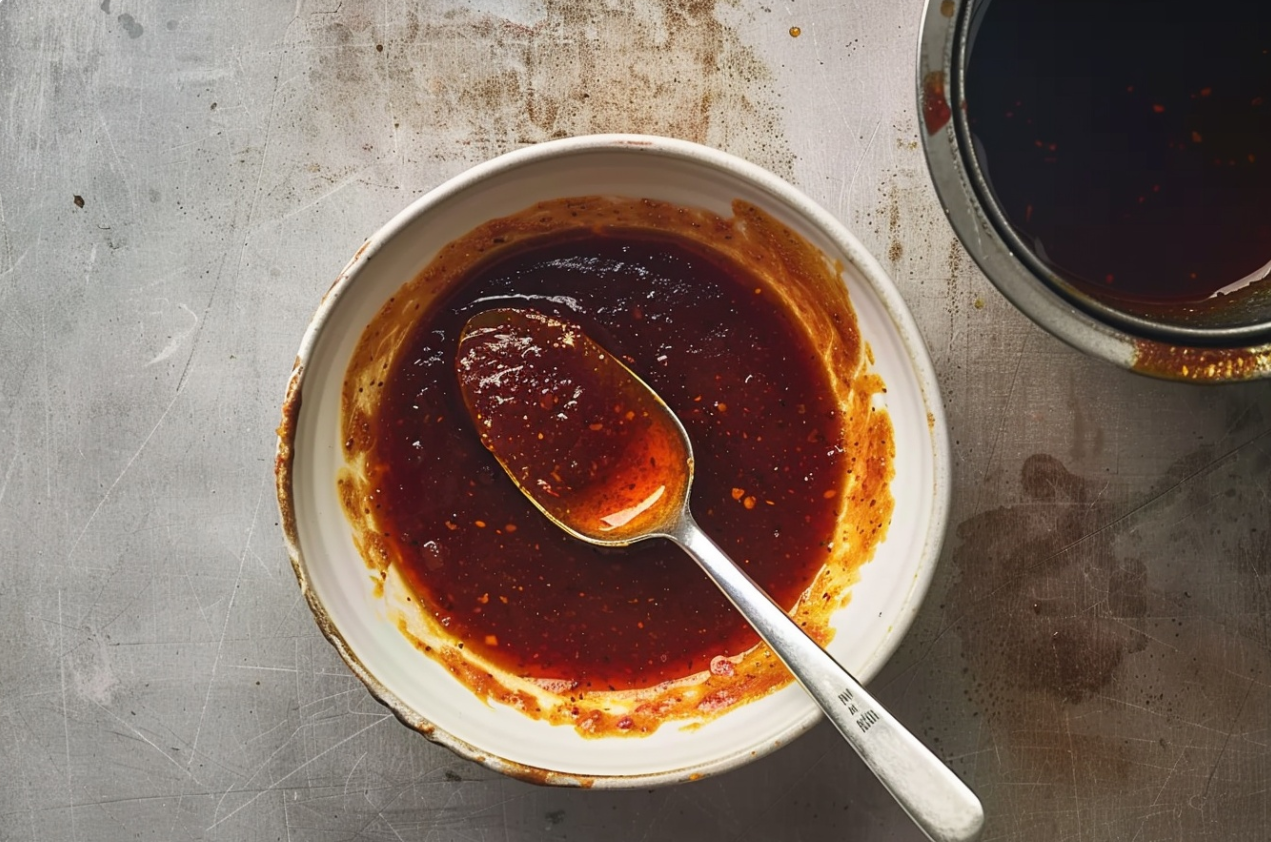
Step 4
After the beans have simmered for 1 hour, drain them, reserving the cooking liquid. Transfer the beans to a 1 1/2-quart casserole dish, and mix in the chopped onion and molasses mixture. Add enough of the reserved cooking liquid so that the sauce covers the beans by about 1/4 inch.
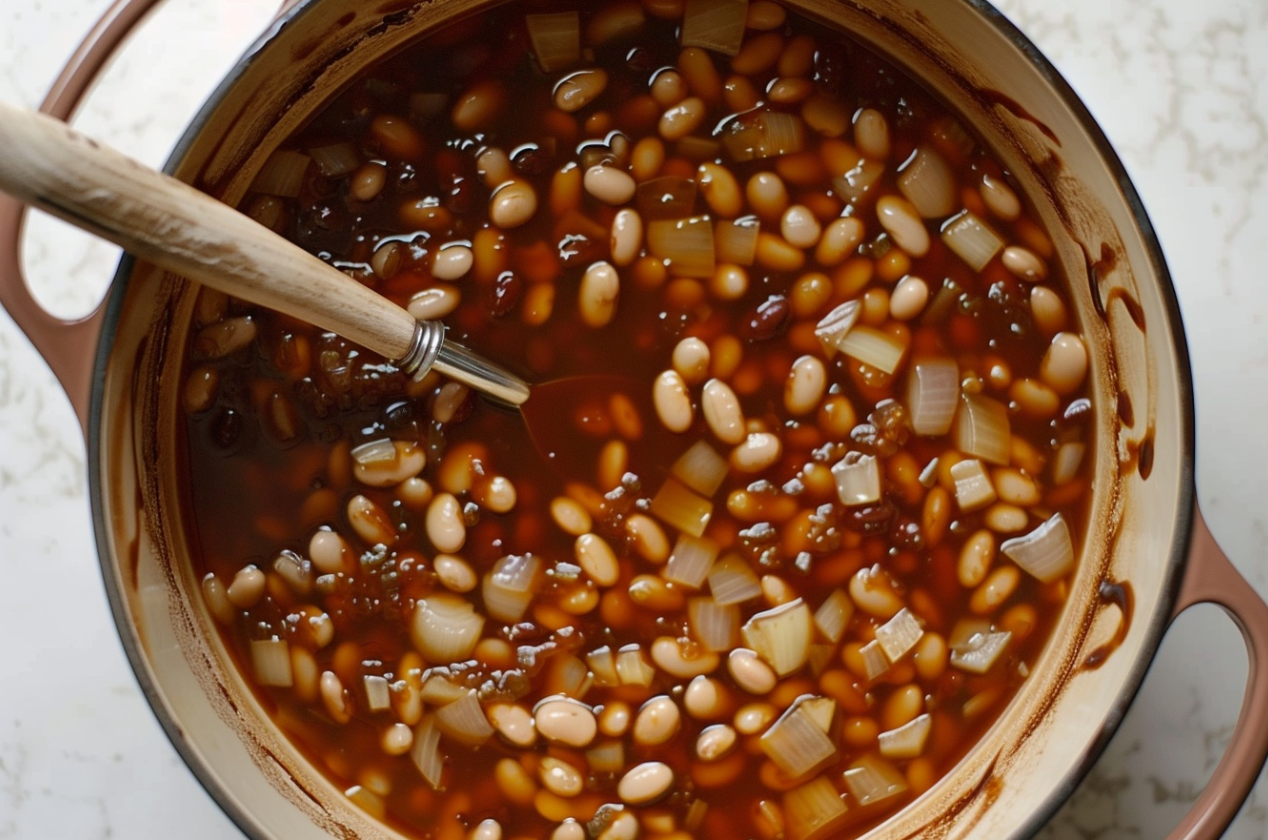
Step 5
Cover the casserole dish and bake in the preheated oven for 10 minutes. Then, lower the heat to 200 degrees F (95 degrees C) and continue cooking for an additional 6 hours, stirring the beans after 3 hours. Once the beans are tender and the sauce has thickened to a sticky consistency, remove from the oven. Stir the beans, cover again, and let them stand for 15 minutes before serving.
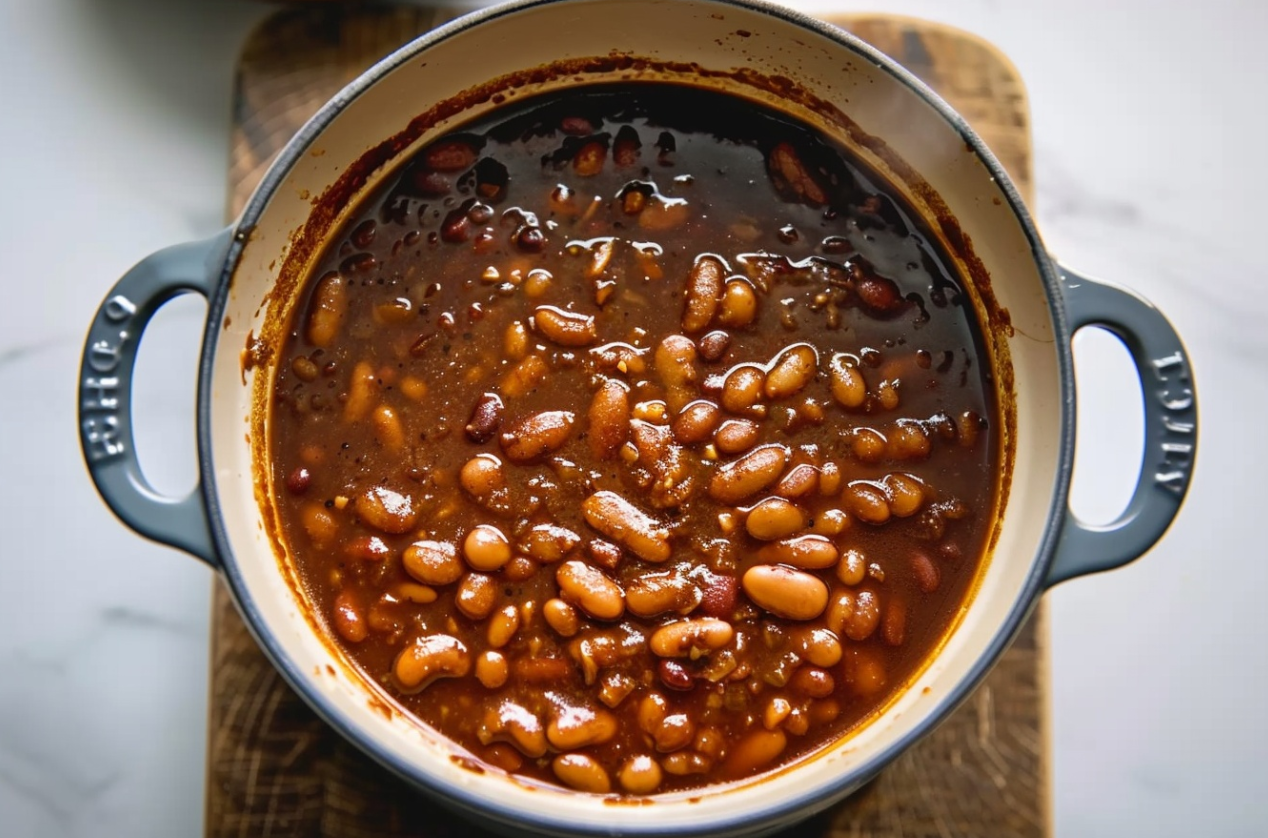
Step 6
Enjoy!
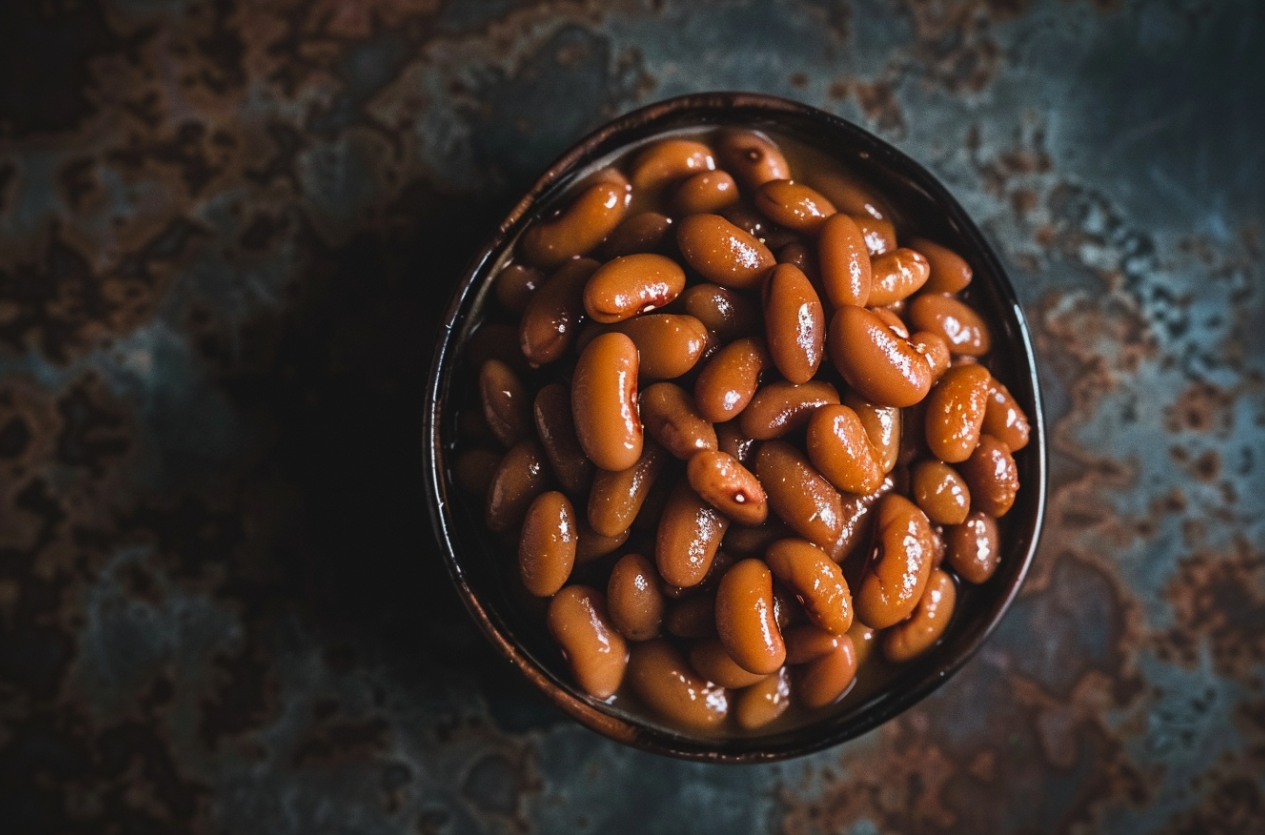
Advanced Cooking Techniques
Slow Cooking
Utilizing a slow cooker for your baked beans recipe can enhance the flavors through extended, gentle cooking:
- Time and Temperature: Cook on low for 8-10 hours or on high for 4-5 hours. This slow infusion helps the flavors meld beautifully.
- Layering Ingredients: Start with a layer of onions and bacon at the bottom before adding the beans and sauce, ensuring maximum flavor absorption by all ingredients. advanced cooking techniques for beans
Smoking Beans
Smoking baked beans introduces a deep, penetrating smoky flavor that’s hard to replicate with other cooking methods:
- Wood Choices: Use hickory or apple wood chips to complement the natural flavors of the beans.
- Setup and Duration: Preheat your smoker to 225°F and smoke the beans for about 2-3 hours. Ensure the beans are in a shallow pan to expose them to as much smoke as possible.
Oven Baking Tips
Oven baking is traditional for baked beans, and perfecting this method can make a significant difference:
- Temperature and Time: Bake at 325°F for about 2-3 hours. This slow baking helps thicken the sauce naturally and intensifies the flavors.
- Stirring Occasionally: Gently stir the beans every 30 minutes to prevent the top from drying out and to distribute flavors evenly.
- Uncover Towards the End: Remove the cover for the last 30 minutes to allow the top to caramelize slightly, adding a delightful texture contrast.
These advanced techniques not only enhance the flavor and texture of your baked beans but also introduce new dimensions to this classic dish, making it a more dynamic and enjoyable part of your culinary repertoire. Discover more advanced recipes.
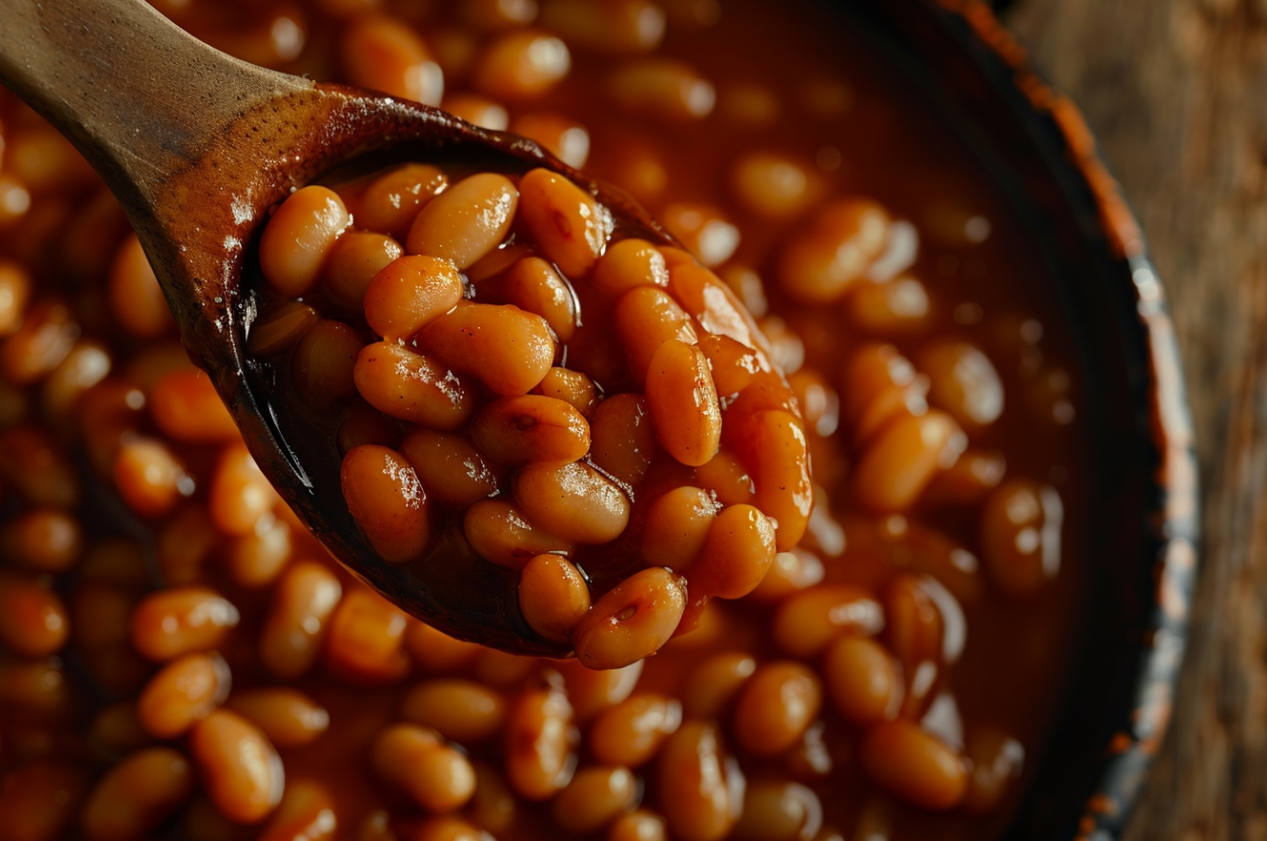
Dietary Adaptations
Vegan and Vegetarian Versions
Adapting your baked beans recipe to fit vegan and vegetarian diets doesn’t mean compromising on flavor:
- Meat Substitutes: Swap bacon or sausage for smoked tofu or tempeh, which add a similar umami and smoky profile.
- Animal Product Alternatives: Use maple syrup or molasses instead of honey and check that your tomato sauce is free from animal-based ingredients.
Low-Sugar and Low-Salt Options
Reducing sugar and salt in your baked beans can be beneficial for health without sacrificing taste:
- Sugar Alternatives: Opt for natural sweeteners like apple sauce or pureed dates, which provide sweetness along with nutrients.
- Salt Substitutes: Enhance flavors with spices like smoked paprika or cumin, and use a splash of low-sodium soy sauce or liquid smoke instead of salt.
Gluten-Free Adaptations
Ensuring your baked beans are gluten-free is crucial for those with sensitivities or celiac disease:
- Ingredient Checks: Confirm that all packaged ingredients, such as tomato sauce and mustard, are labeled gluten-free.
- Awareness of Cross-Contamination: Exercise caution regarding cross-contamination if simultaneously preparing gluten-containing foods.
By carefully selecting ingredients and making thoughtful substitutions, you can cater to various dietary needs while still delivering a delicious, satisfying dish.
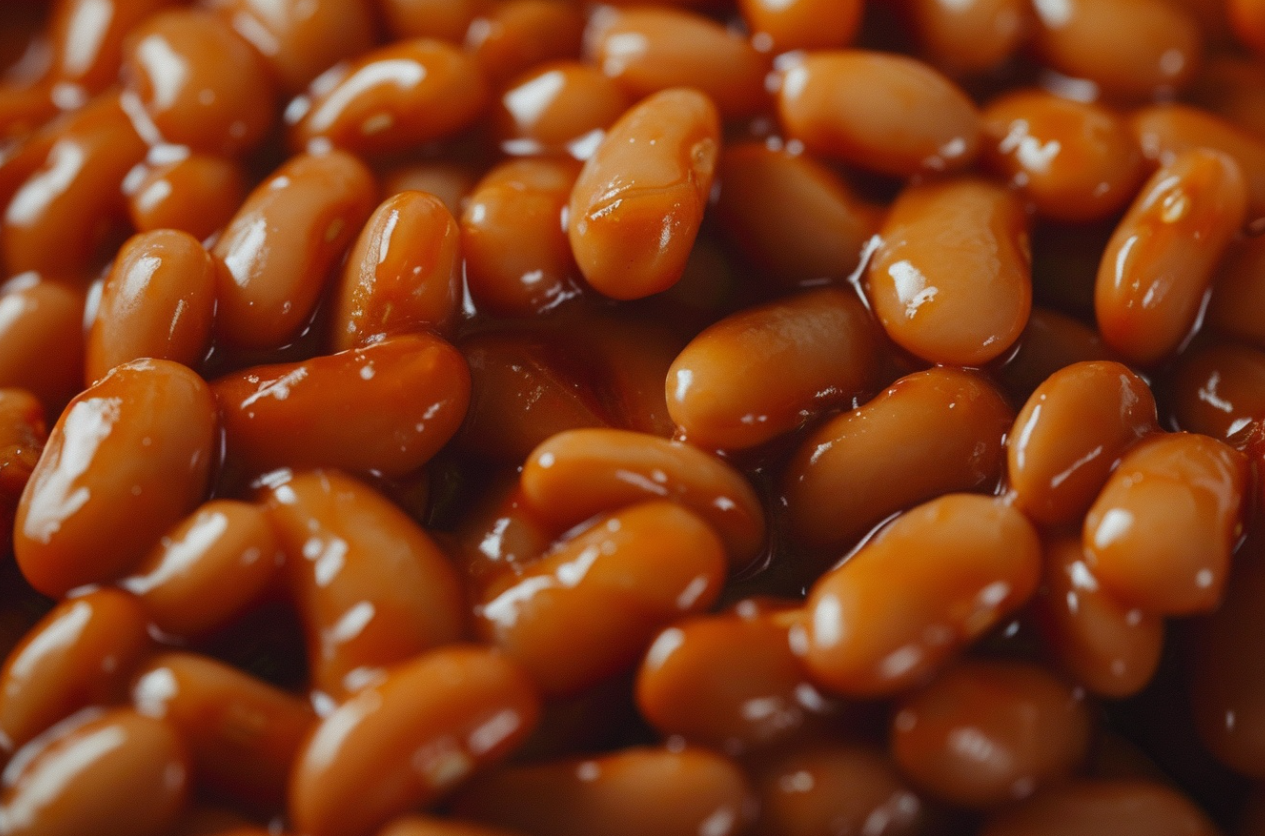
Maintenance and Storage Tips
Proper Storage
Ensuring your baked beans recipe are stored correctly can greatly extend their shelf life and maintain their flavor:
- Cooling Down: Allow the beans to cool to room temperature before storing to prevent condensation that could lead to spoilage.
- Preservation: Secure the beans within a sealed vessel in the refrigerator for a span of up to five days.
- Freezing: Extend the storage life of the beans by freezing them in appropriate containers or freezer bags for up to 6 months.
Reheating Methods
To revive your baked beans recipe perfectly, consider these tips:
- Oven Reheating: Spread the beans in a baking dish and cover with aluminum foil. Revitalize at a temperature of 350°F for an approximate duration of 20 minutes, ensuring thorough warmth throughout.
- Microwave: Opt for a swift alternative by placing the beans in a microwave-safe container, covering them, and heating on high for 2-3 minutes, pausing midway to stir for uniform warmth.
Shelf Life
Understanding the shelf life of your baked beans recipe helps in planning and ensures you enjoy them at their best:
- Freshness Tips: Keep an eye on the texture and smell; any off odors or a change in texture might indicate spoilage.
- Label and Date: Always label your containers with the date of storage to track how long they have been kept.
By following these storage and reheating tips, you ensure that your baked beans remain delicious and safe to eat, maximizing both flavor and texture for future meals.
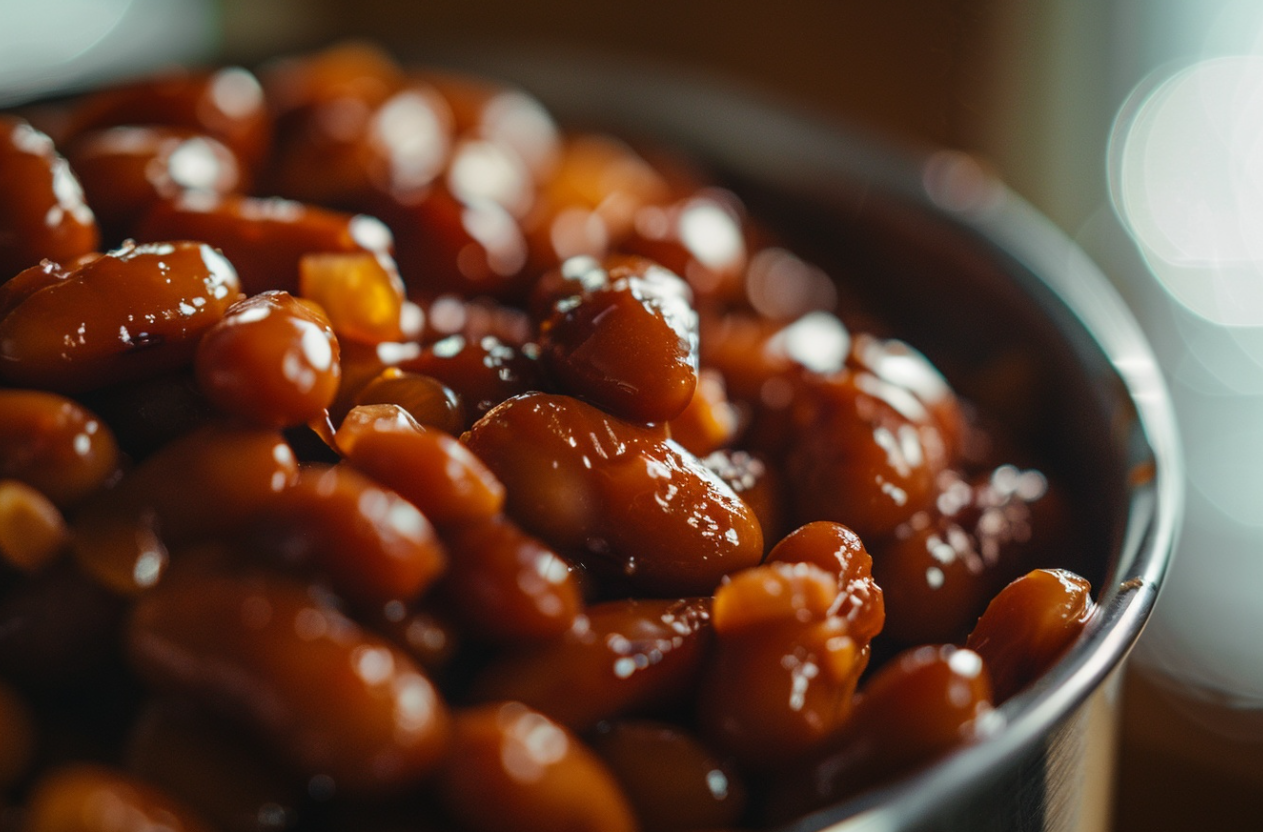
Frequently Asked Questions
How might I enhance the flavor of baked beans to elevate their gustatory appeal?
To make baked beans taste better, you can add a variety of ingredients for enhanced flavor. Consider the following alternatives:
- Sweet Enhancements: Infuse a hint of sweetness using maple syrup, brown sugar, or honey, unlocking a profound and indulgent depth of flavor.
- Savory Additions: Incorporate smoked bacon, chorizo, or smoked sausage for a meaty, umami boost.
- Herbs and Spices: Stir in some fresh herbs like rosemary or thyme, or add a kick with cayenne pepper or smoked paprika.
- Vegetables: Mix in sautéed onions, garlic, bell peppers, or jalapeños for added texture and flavor complexity.
- A Tangy Twist: A dash of apple cider vinegar or a zesty squeeze of lemon can enliven the taste profile and slice through the sugary notes.
How are baked beans made?
Baked beans are typically made through a process that involves soaking, seasoning, and slow-cooking beans to develop a rich, savory-sweet sauce. Here’s a basic outline of how baked beans are prepared:
- Soaking the Beans: Dry beans (commonly navy beans) are first soaked in water overnight to soften and reduce cooking time. Additionally, this aids in mitigating the presence of certain sugars that may induce gastrointestinal discomfort.
- Cooking the Beans: After soaking, the beans are drained and rinsed. They are then cooked in fresh water until tender. This can be done on the stovetop or in a pressure cooker.
- Preparing the Sauce: While the beans are cooking, a sauce is prepared, which typically includes ingredients like tomato sauce, molasses or brown sugar, mustard, vinegar, and various spices. This mixture provides the characteristic sweet and tangy flavor of baked beans.
- Combining Ingredients: Upon achieving tenderness, the beans are drained and integrated with the savory sauce, amalgamating flavors harmoniously.
At this juncture, feel free to incorporate supplementary elements such as bacon, onions, or any other desired flavor enhancements.
- Baking: The beans are then transferred to an oven-safe dish and baked at a low temperature for several hours. This slow baking allows the flavors to meld and the sauce to thicken, resulting in creamy, richly flavored beans.
- Adjusting Flavor: Throughout the baking process, flavors can be adjusted by adding more spices, sugar, or salt according to taste.
What goes with baked beans?
Baked beans are a versatile side dish that pairs well with a variety of foods. Here are some popular options for what to serve with baked beans:
- Grilled Meats: Baked beans are a classic accompaniment to barbecue dishes such as grilled chicken, pork ribs, or beef brisket. The savory essence of the meat intertwines seamlessly with the sweet and tangy nuances of the beans, creating a flawless harmony of flavors.
- Breakfast Foods: They’re a staple in a traditional English breakfast, served alongside sausages, bacon, eggs, and toast.
- Sandwiches and Burgers: Serve baked beans as a side to hamburgers or pulled pork sandwiches for a hearty meal.
- Hot Dogs and Sausages: Baked beans make a great topping or side for hot dogs and sausages, adding a rich flavor that enhances these simple dishes.
- Potato Dishes: Pair them with baked potatoes, potato salad, or mashed potatoes. The creaminess of the potatoes contrasts nicely with the richness of the beans.
- Cornbread: A slice of buttery cornbread pairs wonderfully with baked beans, especially if the beans are a bit spicy.
- Vegetables: For a lighter meal, pair baked beans with steamed or grilled vegetables.
Which variety of beans is traditionally utilized in the preparation of baked beans?
Typically, in classic baked beans formulations, the preferred choice is navy beans, alternatively referred to as haricot beans. They are small, white, and have a mild flavor, which makes them ideal for absorbing the rich, savory-sweet sauce typical of baked beans.
By addressing these common questions, this guide aims to enhance your baked beans experience, making it easier and more enjoyable to include this classic dish in your culinary repertoire. Whether refining your recipe or accommodating specific dietary preferences, these insights and techniques can optimize your culinary endeavor.
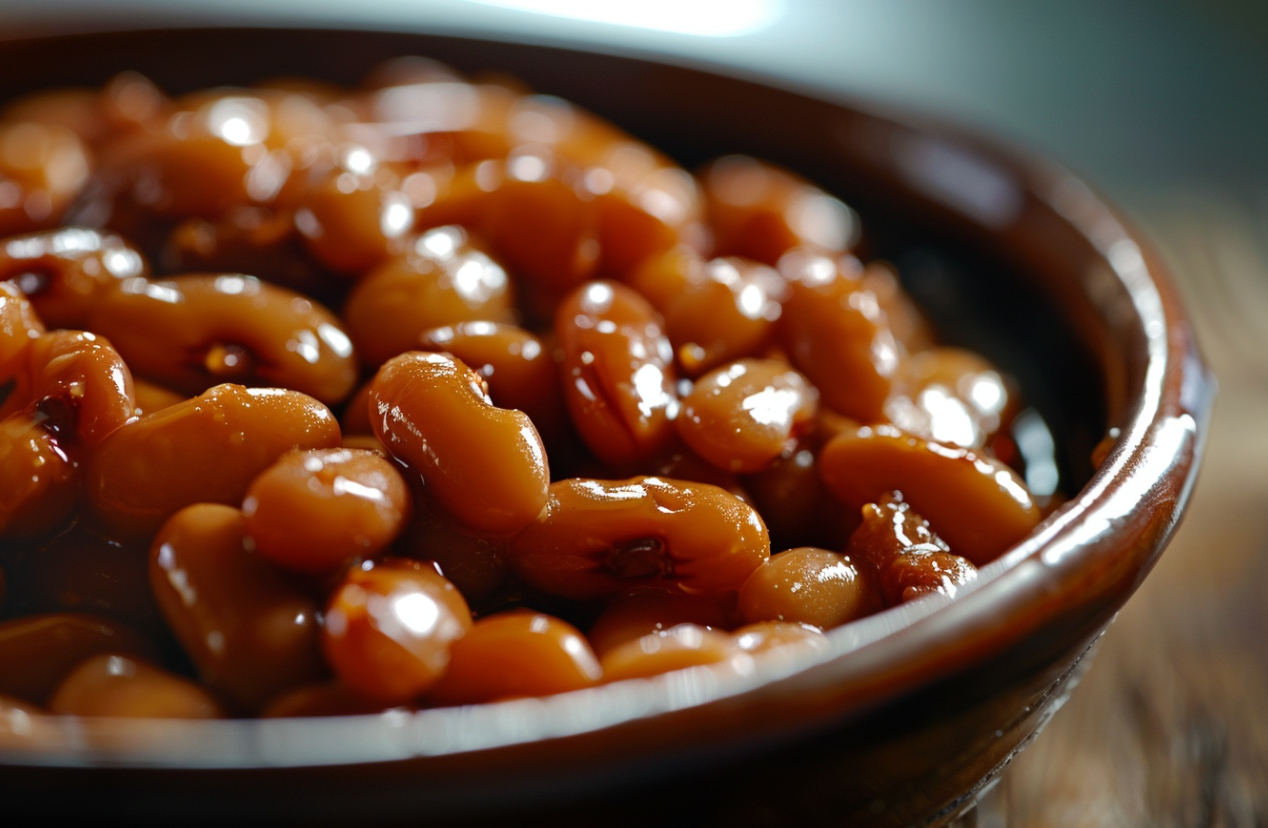
Conclusion
Reflecting on Enhanced Baked Beans Recipe
As we conclude, it’s evident that transforming your baked beans recipe from a simple dish to a standout delicacy can be achieved through thoughtful ingredient choices and cooking techniques. From the addition of sweeteners like maple syrup to the infusion of savory elements such as chorizo, each modification brings a unique dimension to the dish.
The Joy of Versatility
The versatility of baked beans allows for numerous adaptations to fit various dietary needs and preferences. Whether you’re aiming for vegan, gluten-free, or low-sugar variants, the adaptability of this dish ensures that no one misses out on its comforting embrace.
Culinary Creativity
We’ve explored not only traditional methods like oven baking but also modern techniques such as slow cooking and using a pressure cooker. These methods enhance the flavor and texture of the beans, proving that culinary creativity can elevate even the most humble ingredients.
In essence, by integrating new flavors, respecting dietary considerations, and employing diverse cooking methods, your baked beans can transcend their traditional role. They become a dish that not only nourishes but also delights, making every meal a bit more special. Thank you for joining us on this flavorful journey, and may your kitchen adventures continue to be as rewarding as they are delicious.

